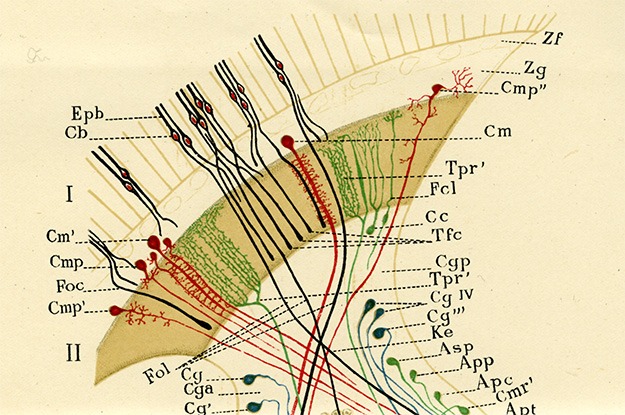Every Sunday afternoon, it would start—the tightening in my chest. The afternoon, my stomach joining in. By bedtime, my jaw clenched.
This was more than 10 years ago. I was back in a frontline consulting role after several years in an internal one.
I wanted to return to the wilds, thinking it would be easy. But it wasn’t.
Unfamiliar industries. Different methodologies. New strategy frameworks.
And I was expected to pitch for new projects and lead them—fast.
I didn’t feel sharp. I felt exposed.
The self-doubt wasn’t abstract. It lived in my body. Tension. Panic. A mind constantly asking what is wrong. By Sunday evening, it always came roaring back.
“I don’t know what I’m doing.”
“I’m a fraud.”
“They’re going to see through me.”
This wasn’t just a tough assignment. It felt like a referendum on whether I still had it.
I needed to believe again.
To claw back a sense of control, I did what my overachiever self always does: I signed up for a challenging, prestigious certification—Business Architecture, in this case.
It was a stretch—new discipline, steep learning curve, unfamiliar territory. But I needed to prove to myself that I could still learn. That I wasn’t washed up. That I wasn’t falling behind.
What I didn’t expect was how much of the struggle wasn’t about smarts—but bandwidth.
I wasn’t bad at learning. I was just overloaded. Exhausted. And judging myself for not absorbing information like I had in my twenties—before responsibilities and stress chewed through my focus.
Enter Barbara Oakley.
I stumbled across Barbara Oakley’s course on adult learning.
Nothing fancy. Just clear, research-backed explanations about how our brains actually learn.
She talked about how the brain toggles between focus and diffusion. Why recovery matters. Why “struggle” isn’t a sign of failure—but evidence that learning is working.
I didn’t need to become a different person.
I just needed a better process.
I applied her techniques while prepping for the certification.
And something shifted.
I passed the exam. But more than that—I got my confidence back.
Not because I’d mastered everything. But because I stopped believing I was broken.
I remembered that I actually like learning. That I’m good at it—when I make space for it. That the problem wasn’t my brain. It was the pressure I was putting on it.
The scientist behind the shift.
Through Oakley, I discovered the story of Santiago Ramón y Cajal.
As a boy, he was rebellious, labeled a failure, apprenticed to a barber and a cobbler. No one would’ve guessed he’d become a Nobel Prize–winning neuroscientist.
But he did.
He’s most famous for proving something foundational:
The brain is not fixed.
It’s plastic. Malleable. Capable of change—throughout your life.
He once wrote something that became foundational to how I think about growth:
“Every man can, if he so desires, become the sculptor of his own brain.”
That line didn’t just stay with me—it inspired me.
Because what I’d just lived through… wasn’t rare or lucky. It was by design.
The myth that holds people back.
I hear in conversations about startups that entrepreneurs are born, not made.
That belief might sound harmless—even inspiring.
But it shrinks the field. It tells a story that only some people are cut out for this. And it quietly suggests that change isn’t possible.
But I’ve lived it. I’ve coached people through it. And I know that it’s not biology that stops most people—it’s what they’ve come to believe about themselves.
Remember Mohini?
In a recent newsletter, I shared the story of Mohini—the white tiger who was released from her cage but never left the 12-by-12 corner she’d grown used to. (If you missed it, you can read it here.)
Even with space all around her, she stayed inside the shape she’d memorized.
Limiting beliefs do that too. Even after the constraint is gone—we stay small.
But we are not tigers. We’re not confined to what we once believed. We’re not trapped—unless we decide to be.
We can rewire. We can rebuild. At any age.
We can move toward possibility—even if we didn’t start there. Even if we once believed we couldn’t.
This is the choice.
You’re not too old. You’re not behind. You’re not broken.
You’re just human. And you get to choose:
The comfort of the cage—
or the discomfort of becoming someone new.
So when someone asks,
“Are business creators born or made?”
You already know where I stand.
It’s not easy. But it’s possible.
And it’s never too late—until you’ve decided you’re done.
What came up for you reading about Barbara Oakley, Santiago Ramón y Cajal, and Mohini?
Relief? Resistance? Something else?
If you feel called, send me an email at pierre at pierrebradette dot com. I’d love to hear.
To your success,
Pierre
Certified Professional Coach
P.S. If Barbara Oakley’s work piqued your interest, check out her book Mindshift: Break Through Obstacles to Learning and Discover Your Hidden Potential.
From her website:
“This book shows us how we can uncover and develop talents we didn’t realize we had—no matter what our age or background.”


Pingback: Business Creator: Born or Made? I’ve Got Thoughts – Pierre Bradette Coaching & Consulting